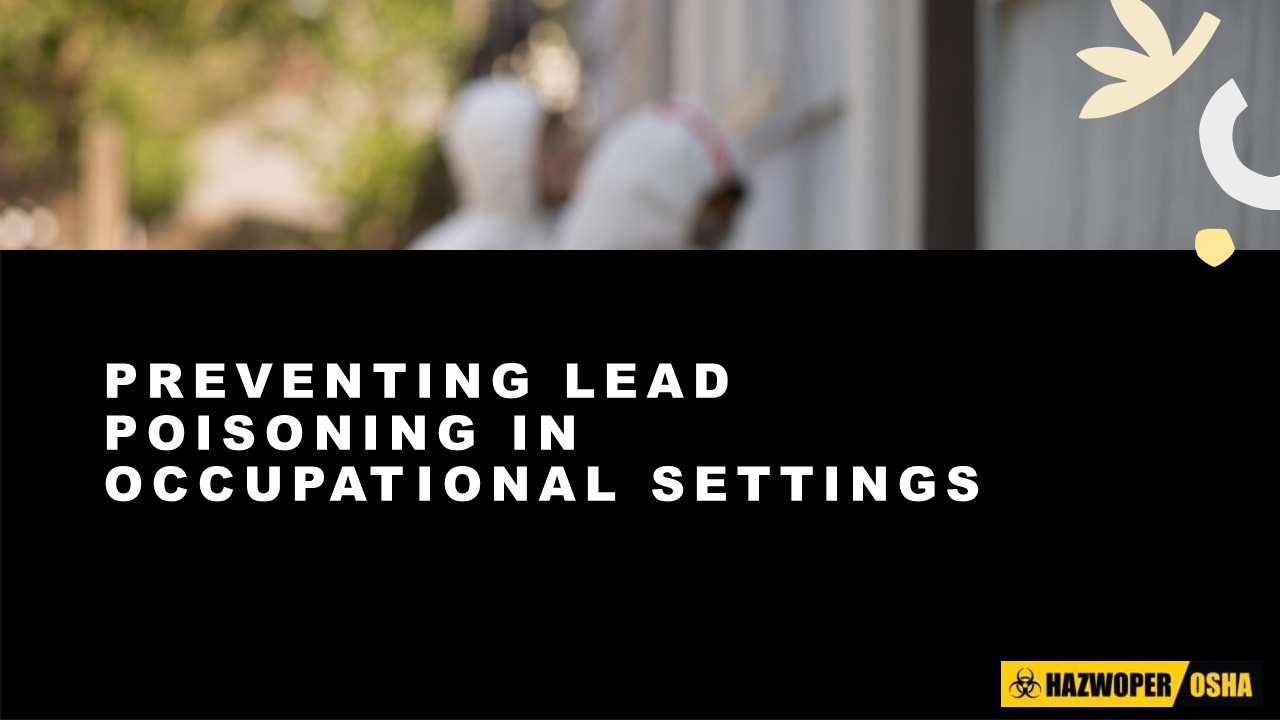Preventing Lead Poisoning in Occupational Settings - PowerPoint PPT Presentation
Title:
Preventing Lead Poisoning in Occupational Settings
Description:
Preventing lead poisoning in occupational settings is crucial for safeguarding employee health. Implementing proper safety measures, ensuring compliance with regulations, and providing necessary training can significantly reduce the risk of lead exposure in the workplace. Take proactive steps today to protect your workforce from this occupational hazard. Your employees' health is worth the investment in a safe and secure working environment. – PowerPoint PPT presentation
Number of Views:3
Title: Preventing Lead Poisoning in Occupational Settings
1
P R E V E N T I N G L E A D P O I S O N I N G I
N O C C U PAT I O N A L S E T T I N G S
2
Every October, the Centers for Disease Control
and Prevention (CDC), the U.S. Environmental
Protection Agency (EPA), and the U.S. Department
of Housing and Urban Development (HUD)
collaborate to observe National Lead Poisoning
Prevention Week (NLPPW). This dedicated week aims
to raise awareness about lead poisoning
prevention and encourage preventive actions to
reduce the likelihood of childhood lead
exposure. Children are especially vulnerable to
the effects of lead poisoning because their
bodies are still developing. Lead can damage a
child's developing brain and nervous system,
which can lead to learning disabilities,
behavioral problems, and other long-term health
problems.
3
What is Lead?
Lead is a heavy metal that is toxic to humans. It
can be found in various products and materials,
including lead-based paint, lead- contaminated
dust, lead- contaminated soil, batteries, and
gasoline. Lead poisoning can occur when people
breathe in lead dust or fumes or ingest lead from
food or water.
4
Lead Poisoning in Occupational Settings
- Painting
- Plumbing
- Auto repair
- Recycling operations
- Printing
- Pottery
- Shooting ranges
- Construction and demolition operations
- Lead smelting and refining
- Lead soldering and welding
- Battery manufacturing
- Ammunition and firearms manufacturing
5
Lead poisoning can have severe consequences for
the health and well-being of workers directly
exposed to lead. Lead exposure can also be
experienced by individuals (such as work
colleagues, friends, and family members) because
of secondary contamination. Even low levels of
lead exposure can result in health issues.
6
Health Implications of Lead Poisoning
- Neurological damage Impaired cognitive function,
behavioral changes, and developmental issues in
children. - Kidney and cardiovascular problems.
- Anemia.
- Reduced fertility.
- Digestive issues.
- Learning disabilities
7
Preventing Lead Poisoning in Occupational Settings
- Employee Training
- Elimination and Substitution
- Engineering Controls
- Administrative and Work Practice Controls
- Personal Protective Equipment (PPE)
- Medical Monitoring
8
Train and create awareness among employees to
prevent lead poisoning.
Follow OSHAs Lead Standards for the General
Industry (29 CFR 1910.1025) and the Construction
Industry (29 CFR 1926.62)
9
Enroll Employees in Our Lead Awareness Training
Course Today!
- Providing employees training on working with lead
or lead- containing materials is essential for
minimizing lead exposure and preventing lead
poisoning in occupational settings. - Below are some of the topics that the training
should cover. - The hazards of lead exposure.
- The symptoms of lead poisoning.
- How to prevent lead exposure.
- How to implement engineering, administrative, and
work - practice controls.
- How to use personal protective equipment (PPE)
properly.
10
Conclusion
- Lead poisoning is a serious health problem that
can be prevented in occupational settings.
Ensuring a workplace free from lead hazards and
lead exposure is not just about regulatory
compliance it's about safeguarding the lives and
livelihoods of workers. - Employers and workers can work together to reduce
lead exposure by implementing engineering
controls, using PPE, following good work
practices, and providing employee education and
training. - In the pursuit of a safer workplace, lead
poisoning prevention is an essential priority.
Lets take a moment during this National Lead
Poisoning Prevention Week to spread greater
awareness of the dangers of lead exposure in and
out of the workplace.
11
Read the full article _at_ https//hazwoper-osha.com/
blog- post/preventing-lead-poisoning-in-occupation
al-settings
12
Contact US
https//hazwoper-osha.com/ 1-866-429-6742 info_at_HA
ZWOPER-OSHA.com 11901 Santa Monica Blvd. Suite
414 Los Angeles, CA 90025

